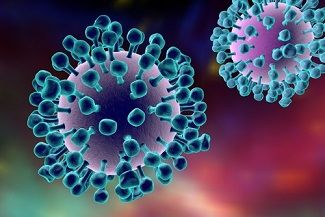Canine Influenza A Virus Outbreak in the United States
A 2015 outbreak of H3N2 canine influenza A virus highlights the need for effective outbreak control measures and increased monitoring of viral spread.

A recent report in the Centers for Disease Control and Prevention’s Emerging Infectious Diseases described the 2015 H3N2 canine influenza A virus (CIV) outbreak in the United States.
Influenza A viruses (IAVs) cause single infections and disease outbreaks, often after transmission from an avian host to mammals or poultry. Interestingly, until the H3N8 CIV was recognized in 2004, it was believed that dogs could not sustain a natural CIV infection.
The H3N8 virus was transferred to dogs from the H3N8 equine influenza virus. First detected in racing greyhounds in Florida in 2004, H3N8 CIV caused an outbreak that was enabled by an interconnected network of animal shelters and kennels; this virus has since been confined to the northeastern United States, possibly due to intensive control measures and vaccination strategies in shelters and kennels.
Details surrounding H3N2 CIV’s initial emergence of remain unclear, although serologic evidence suggests an emergence in 2006 in southern China, followed by a rapid spread to South Korea and Thailand. In Asian countries, H3N2 CIV is highly prevalent in kennels, live animal markets, and meat dog farms. Close contact between dogs and poultry in these markets can facilitate interspecies IAV transmission.
RELATED:
- Clinical Signs & Diagnosis of Canine Influenza
- H3N2 Canine Influenza Infects Eight Shelter Cats in Indiana
Clinical signs of H3N2 CIV primarily involve mild upper respiratory disease, plus more serious signs if other viral or bacterial infections are present. Previous studies in pigs and household cats reported no sustained H3N2 CIV transmission in these species. Human IAV study results, though, suggest that dogs can serve as “mixing vessels” for CIVs and human IAVs, the report’s authors noted, raising human health concerns.
H3N2 Outbreak Details
Reports of unusual canine respiratory disease began in February 2015 in Chicago. From early March to April 2015, the disease spread rapidly among dogs in animal shelters, boarding facilities, veterinary clinics, and dog training classes in Illinois, Indiana, and Wisconsin. The dogs experienced mild to moderate respiratory disease, often with a honking cough. Serious disease occurred in dogs with other viral infections like parainfluenza; these dogs lived primarily in animal shelters.
In April 2015, genomic analysis of clinical samples from infected dogs identified H3N2 CIV, with whole-genome sequencing confirming that the US H3N2 CIV originated in South Korea. In May 2015, H3N2 CIV spread to the eastern and Southeastern United States but did not cause sustained or widespread outbreaks.
Overall, viral spread was wavelike. Particularly in shelters, viral load increased rapidly within several days of probable infection, followed by prolonged low viral RNA levels for several weeks. In Chicago’s animal shelters and kennels, the disease ran its course within a few months once the infected dogs became immune.
How H3N2 CIV got introduced to the United States remains unclear. It is possible that infected South Korean dogs were rescued from that country’s live animal markets or meat dog farms and were transported to the United States. A network coordinating the dogs’ rehoming likely contributed to the virus’s spread in this country. Fomite transportation was an unlikely contributor because H3N2 CIV remains infectious on fomites only for up to 2 days.
Moving Forward
To control further H3N2 CIV spread, the investigators proposed limiting the transfer of dogs from infected areas and employing a targeted vaccination strategy for dogs at high risk for H3N2 CIV infection.
“Further monitoring, epidemiologic analysis, and evolutionary studies of H3N2 CIV in the US will help determine whether these viruses pose a threat to human health and will answer basic ques­tions regarding how IAVs invade and infect new hosts,” they concluded.
Dr. Pendergrass received her Doctor of Veterinary Medicine degree from the Virginia-Maryland College of Veterinary Medicine. Following veterinary school, she completed a postdoctoral fellowship at Emory University’s Yerkes National Primate Research Center. Dr. Pendergrass is the founder and owner of JPen Communications, a medical communications company.